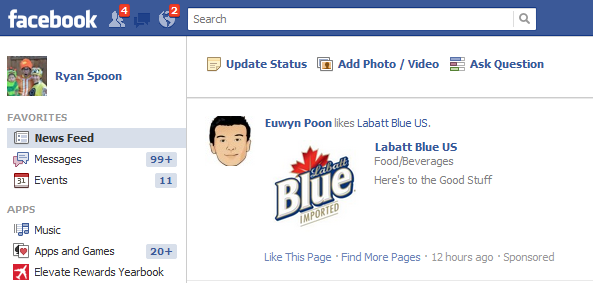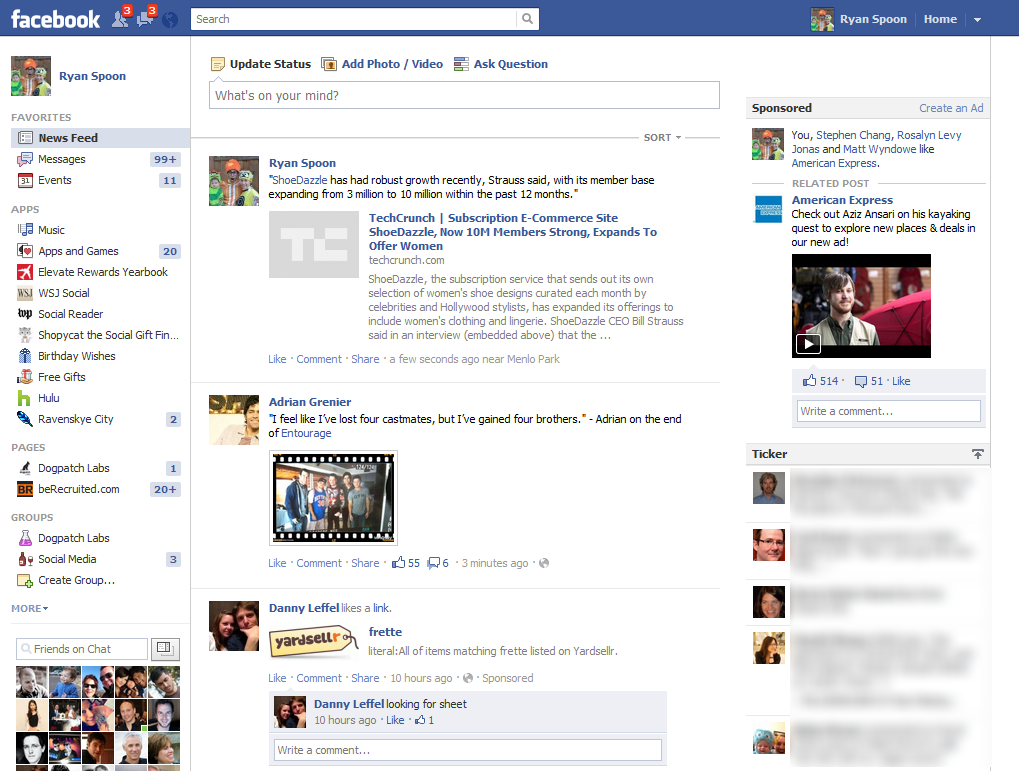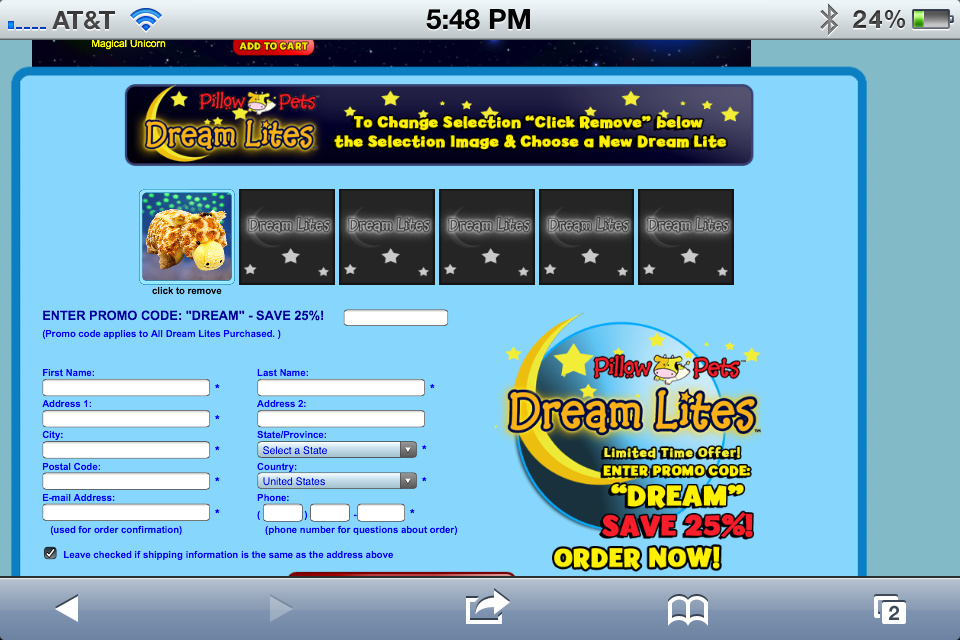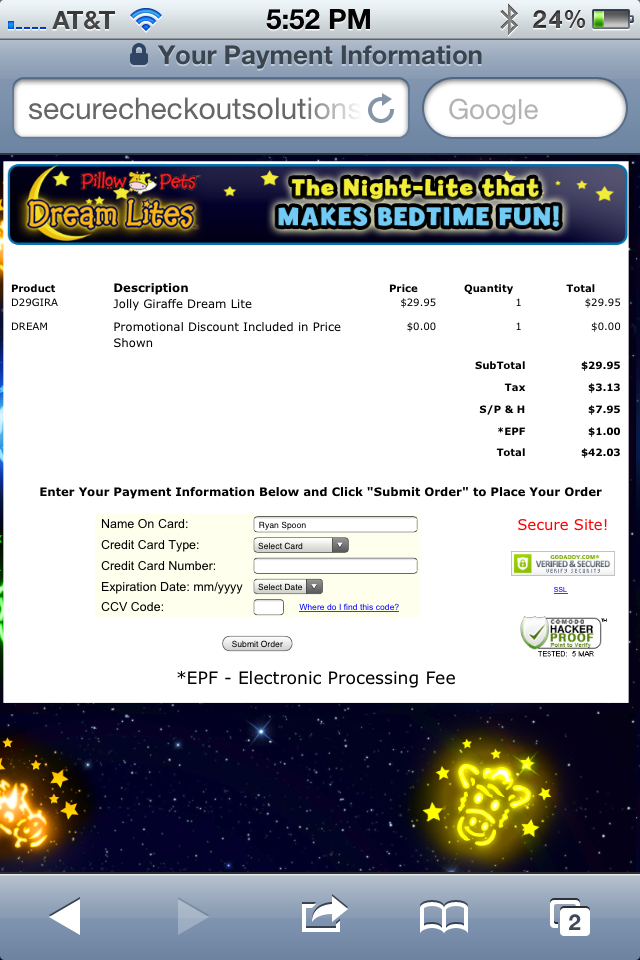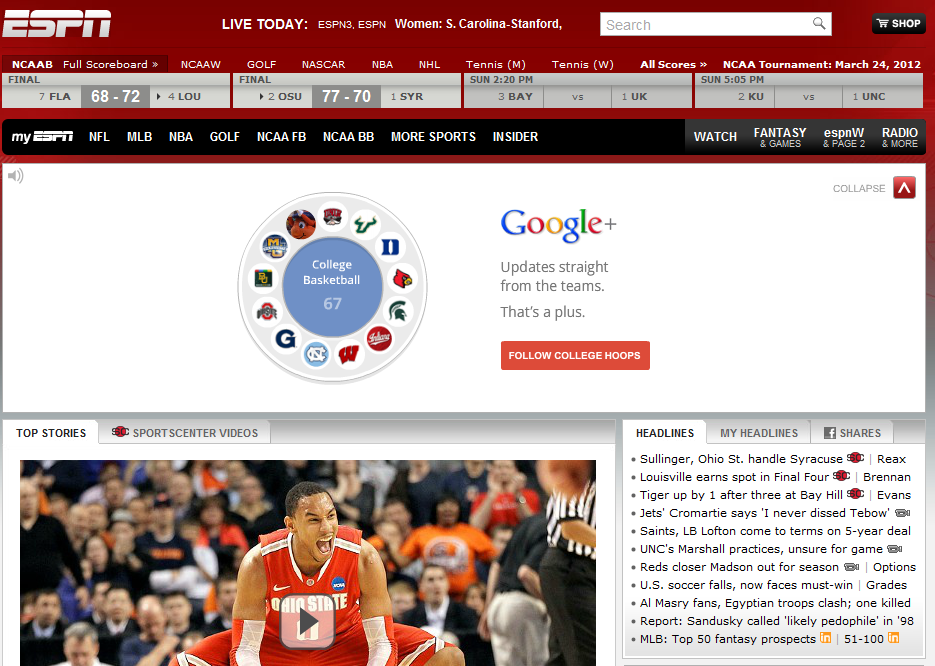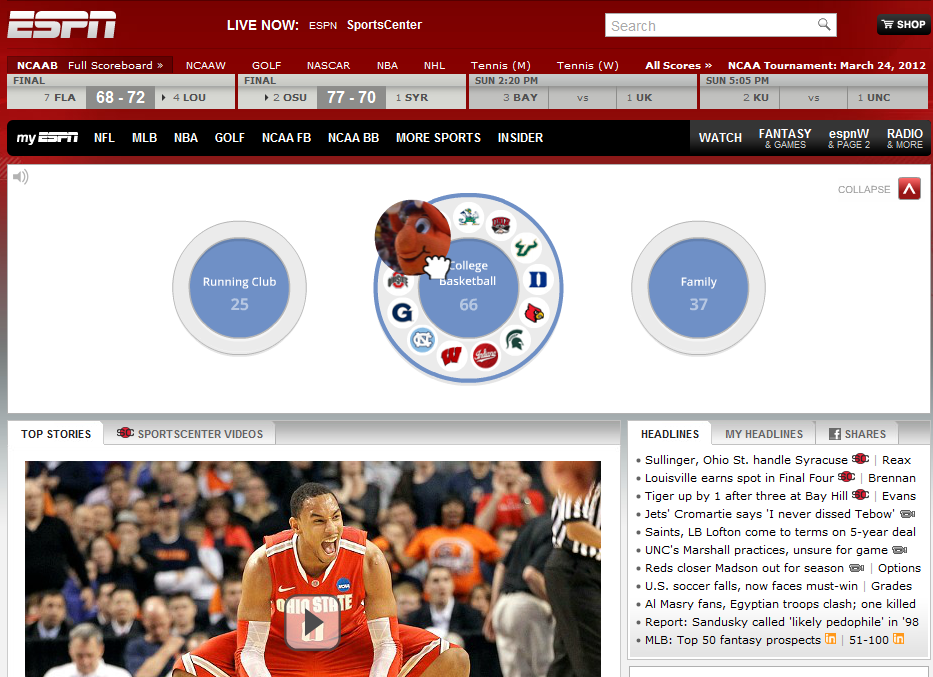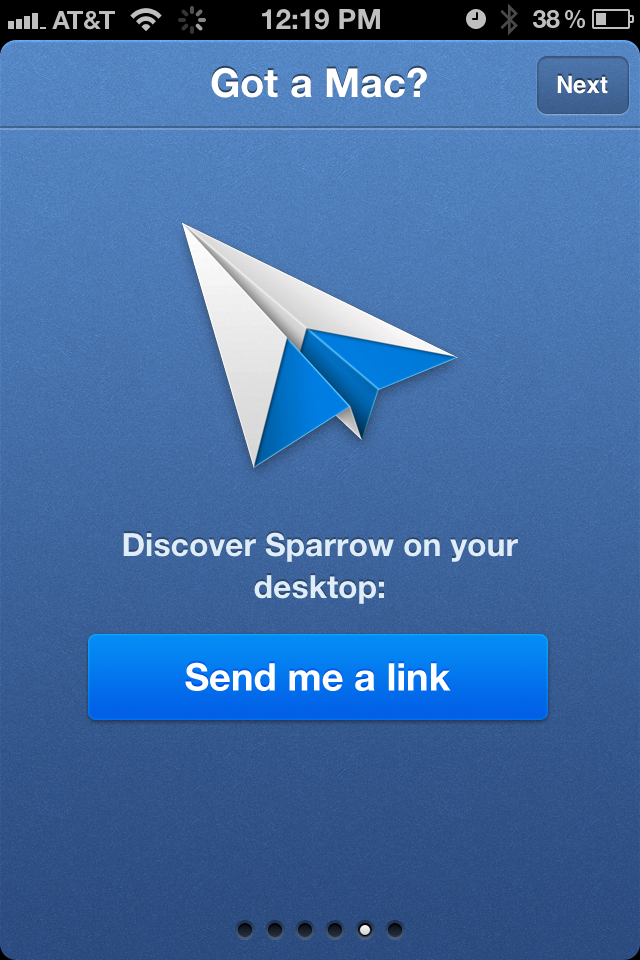Fun and interesting screenshot below from my Facebook newsfeed just a few minutes ago. These two posts appeared beside one another and were not clustered under a topic (ie 'Masters' or 'Golf') by Facebook. Titleist posted 19 minutes ago that champion Bubba Watson used their ProvV1x ball. That came 10 minutes ahead of Nike Golf, whose icon is Tiger Woods (had a very poor outing). They posted a generic comment about the tournament.
Also worth noting - Titelist's Facebook Timeline is great!
Both brands are posting about the same topic - trying to take advantage of the current interest - and both brands are doing so at the exact same time. Titelist is doing it far more effectively from an engagement number (250k fans vs. 1.1m) and are leveraging the person (Bubba) to do so.



